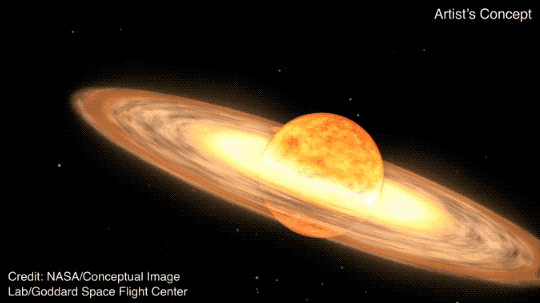Astronomy
Missed the Auroras in May? Here’s How to See Them Next Time
Three veteran aurora chasers and a NASA scientist share everything you need to know to check these dazzling displays off your bucket list
Missed the 'Parade of Planets'? These Upcoming Alignments Will Likely Be Better, Anyway
Astronomers tempered expectations of the celestial event this week, pointing to others in the near future as more exciting opportunities for sky watchers
Venus Might Still Have Active Volcanoes, as Recent Lava Flows Suggest 'Ongoing' Eruptions
Astronomers have again discovered evidence of recent volcanic activity on Earth's sister planet in data from the 1990s
See Five Dazzling New Images of the Cosmos, Captured by Europe's Space Telescope
With its visible and infrared photography, Euclid—known as the "dark universe detective"—is helping astronomers better understand dark matter and dark energy
Researchers Trace the Origin of the Sun's Magnetic Field, Shedding Light on Space Weather and Solar Cycles
In a new study, scientists suggest the sun's magnetic field originates much closer to the star's surface than previously thought, a finding that could boost predictions of solar activity
Watch a Blue-Green Comet Illuminate Skies Over Spain and Portugal
The colorful fireball mesmerized onlookers—and its unexpected appearance surprised astronomers who are hoping to better predict when space rocks enter Earth's atmosphere
James Webb Telescope Detects Earliest Known Black Hole Merger, Just 740 Million Years After the Big Bang
The new observations could help explain how black holes became so massive in the early universe
Astronomers Discover an Atmosphere on a Hot, Rocky Exoplanet With an Ocean of Magma
It's the best evidence yet of an atmosphere on a rocky planet outside our solar system, researchers say, and studying the distant world could provide insight into Earth’s early days
Scientists Discover 27,500 Asteroids in Old Telescope Images Using A.I.
While most of the team’s new finds are located in the main asteroid belt, about 100 are near-Earth asteroids that pass close to our planet's orbit
See New Images of the Horsehead Nebula, Captured in Striking Detail by the James Webb Telescope
The beautiful infrared imagery features one of the best known locations in space to study the evolution of stars and interstellar matter
How to Watch the Dazzling Eta Aquarid Meteor Shower, Bringing an Unusual 'Outburst' to Skies This Weekend
This year's spectacle will be more impressive than usual, as the Earth passes through a concentrated clump of 3,000-year-old comet debris
Were Stonehenge's Builders Guided by the Moon?
Researchers are studying the monument's connection to a celestial event that occurs every 18.6 years
A Rare Nova Explosion Will Soon Bring a 'New Star' to the Night Sky—How to Catch a Glimpse
In an event that occurs only once every 80 years, a distant remnant of a star will grow much brighter, briefly becoming visible to Earth
A Stellar Collision Birthed the 'Dragon's Egg' Nebula, a Puzzling Structure in the Milky Way
The colorful cloud of gas and dust has a violent origin—and this explains the unusual traits of two massive stars within it, astronomers say
Astronomers Discover a 'Sleeping Giant' Black Hole in Our Galaxy—the Second-Closest Known to Earth
Called Gaia BH3, the dormant black hole is 33 times more massive than the sun, making it the largest recorded stellar black hole in the Milky Way
The Seven Most Amazing Discoveries We’ve Made by Exploring Mercury
Only two robotic missions have made it to the Swift Planet, but they were crucial for upending many false assumptions of that sun-scorched world
Meteorites Are Becoming Harder to Find as They Sink Into Antarctica's Melting Ice
The disappearing space rocks are burying valuable clues into the history and composition of our solar system, according to a new study
How to Watch the Brilliant Lyrid Meteor Shower This Month
Fiery streaks will illuminate the night sky from April 15-29, with the spectacle's peak occurring from April 21-22
When Are the Next Solar Eclipses? 2026 Promises Totality in Europe, While Much of America Has a Decades-Long Wait
The next total solar eclipse visible from the contiguous U.S. won’t take place until August 23, 2044—but eclipse chasers will have other opportunities to experience totality before that
Dark Energy Could Be Evolving Over Time, Raising Questions About the Nature of the Cosmos
The largest 3D map of the universe ever made hints that dark energy might not be a constant, though the findings must be backed up with more data
Page 4 of 50
:focal(360x240:361x241)/https://tf-cmsv2-smithsonianmag-media.s3.amazonaws.com/filer_public/47/ed/47ed2f31-f77b-4c3f-a20a-574bc1a8c214/sinha2_aurorasaurus_pho_20240411.jpg)
:focal(4000x2095:4001x2096)/https://tf-cmsv2-smithsonianmag-media.s3.amazonaws.com/filer_public/03/64/03647ce0-0203-473c-8ba1-c5cc4725de7e/gettyimages-182910299.jpg)
:focal(625x351:626x352)/https://tf-cmsv2-smithsonianmag-media.s3.amazonaws.com/filer_public/d9/43/d9438ca3-e253-40a4-b6eb-142189c2657c/1-jpegpia00108.webp)
:focal(4100x4100:4101x4101)/https://tf-cmsv2-smithsonianmag-media.s3.amazonaws.com/filer_public/41/9c/419c9894-6994-4251-83d5-8b16b640ac3b/euclid_s_new_image_of_star-forming_region_messier_78.jpg)
:focal(900x844:901x845)/https://tf-cmsv2-smithsonianmag-media.s3.amazonaws.com/filer_public/dc/70/dc707415-ed07-4cb0-a6d6-5445853e8046/gsfc_20171208_archive_e000393orig.jpg)
:focal(1792x1007:1793x1008)/https://tf-cmsv2-smithsonianmag-media.s3.amazonaws.com/filer_public/6c/78/6c784dd5-967d-4b5c-9b5e-394a78abd2ab/screenshot_2024-05-20_at_11245_pm.png)
:focal(2000x2000:2001x2001)/https://tf-cmsv2-smithsonianmag-media.s3.amazonaws.com/filer_public/bb/6b/bb6bbcb6-6fa9-4c05-bca7-0c89fd918087/weic2413a.jpg)
:focal(1000x571:1001x572)/https://tf-cmsv2-smithsonianmag-media.s3.amazonaws.com/filer_public/fc/90/fc9022fc-7d85-4a46-9b9c-826922f39b14/stsci-01hwqz4bjsgtdzc7fpdtvtnztc.jpg)
:focal(1920x1097:1921x1098)/https://tf-cmsv2-smithsonianmag-media.s3.amazonaws.com/filer_public/48/ed/48ed9748-7021-489a-a4c9-daf2d57d3cd1/angledview.png)
:focal(308x571:309x572)/https://tf-cmsv2-smithsonianmag-media.s3.amazonaws.com/filer_public/1d/b6/1db6560a-ff52-4a96-8352-098b9c19b152/horsehead2.webp)
:focal(512x341:513x342)/https://tf-cmsv2-smithsonianmag-media.s3.amazonaws.com/filer_public/68/38/68389cd5-7ba9-42f1-afb5-937a0bfd18ca/8711805373_c1221fe8a3_b.jpg)
:focal(1632x1228:1633x1229)/https://tf-cmsv2-smithsonianmag-media.s3.amazonaws.com/filer_public/2e/cb/2ecb6996-6343-4a73-a916-c10219dc64ce/the_moon_and_stonehenge_james_o_davies_english_heritage.jpeg)

:focal(1094x1354:1095x1355)/https://tf-cmsv2-smithsonianmag-media.s3.amazonaws.com/filer_public/29/3e/293ecff1-66d0-4e59-b1af-4e2a5e17339b/dragon1.jpg)
:focal(580x331:581x332)/https://tf-cmsv2-smithsonianmag-media.s3.amazonaws.com/filer_public/19/32/19321ec4-4ae9-4749-ad51-7ec75adbf27a/gaia1.webp)
:focal(720x542:721x543)/https://tf-cmsv2-smithsonianmag-media.s3.amazonaws.com/filer_public/11/a8/11a8f779-8331-4682-8899-246f3c2815ba/main_esa_ssiow_iridescent_mercury_web.jpg)
:focal(930x700:931x701)/https://tf-cmsv2-smithsonianmag-media.s3.amazonaws.com/filer_public/2f/af/2faf224c-16ac-4efd-8bb9-e19576c87625/arctic2.jpg)
:focal(4330x2887:4331x2888)/https://tf-cmsv2-smithsonianmag-media.s3.amazonaws.com/filer_public/10/0e/100e6843-676a-4707-b81e-79588851dda4/gettyimages-1220506373.jpg)
:focal(1500x1007:1501x1008)/https://tf-cmsv2-smithsonianmag-media.s3.amazonaws.com/filer_public/d9/3f/d93ff800-73dc-47fa-97f3-ef0d1ecf5ece/gettyimages-2147666813.jpg)
:focal(2000x1200:2001x1201)/https://tf-cmsv2-smithsonianmag-media.s3.amazonaws.com/filer_public/ea/d8/ead81125-df3b-468c-9cb9-804b41f8e3ab/noirlab2408b.jpg)